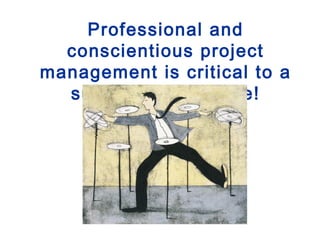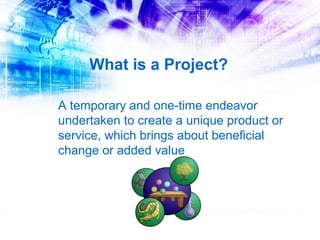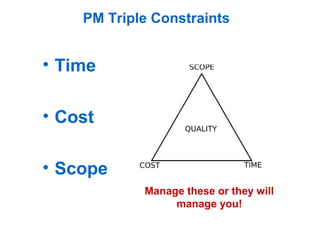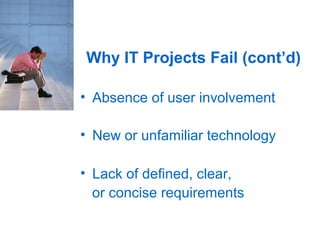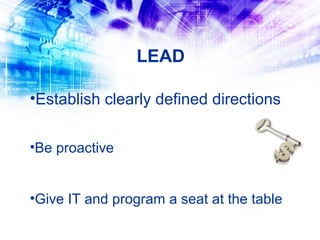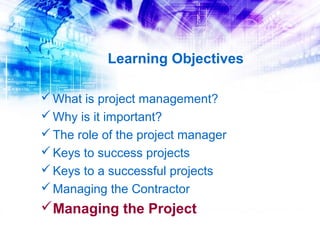The document defines key aspects of project management including defining project management, the importance of project management, and the role of the project manager. It also outlines keys to successful projects such as having a plan, strong leadership, clear communication, and effective management. Managing the contractor and entire project are also discussed, emphasizing the importance of monitoring budgets, schedules, and scopes to deliver quality products on time and within budget.



